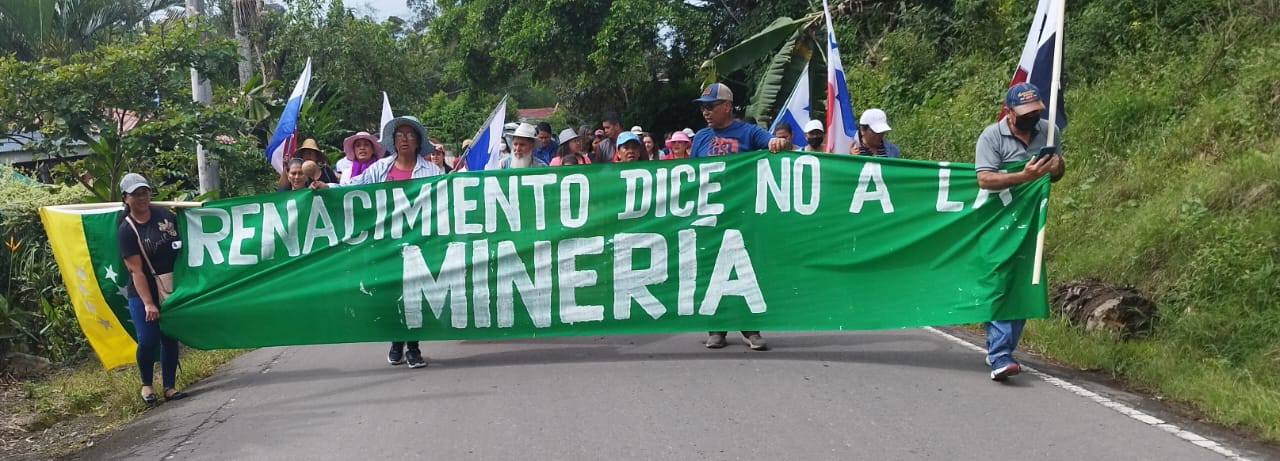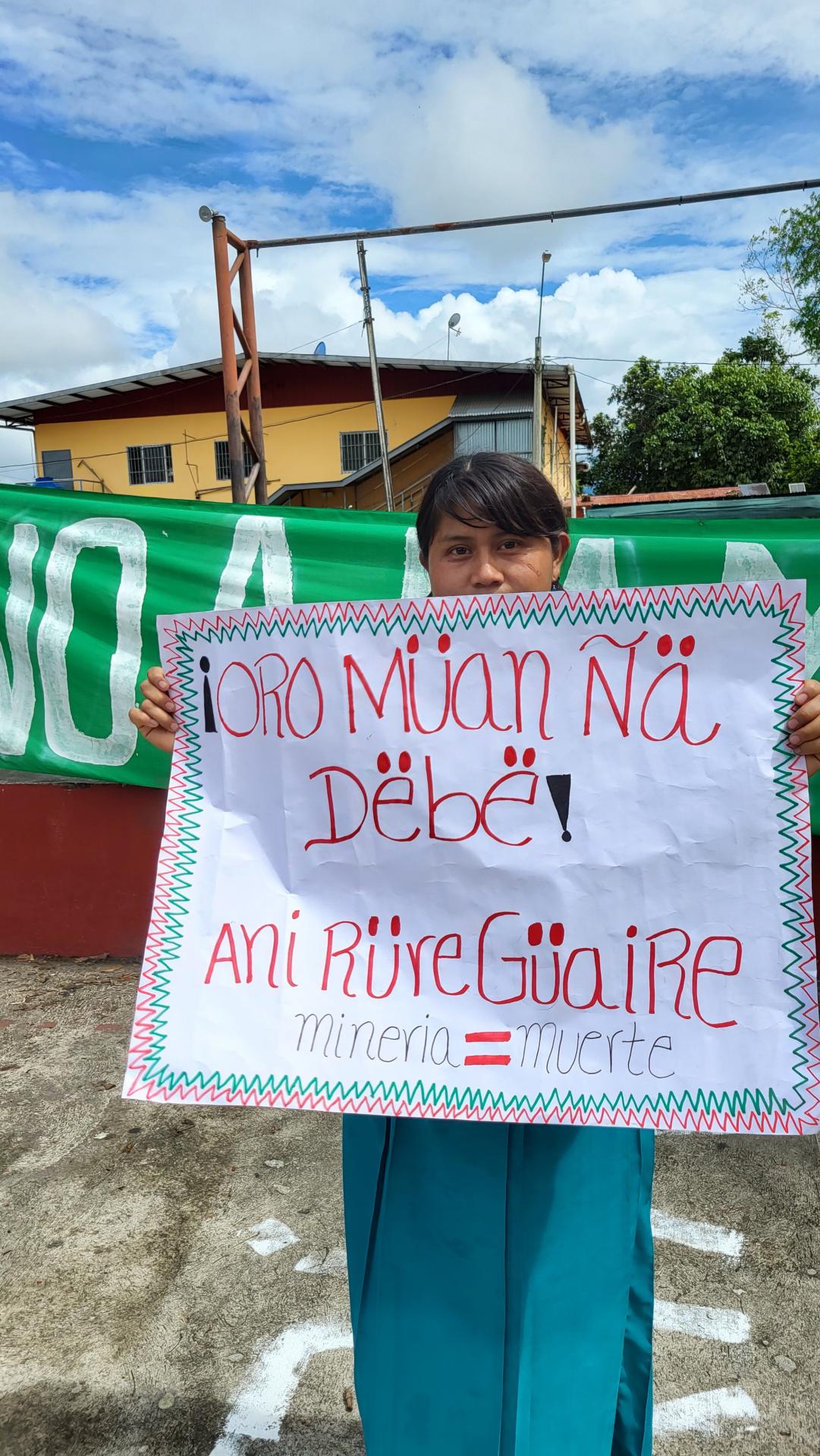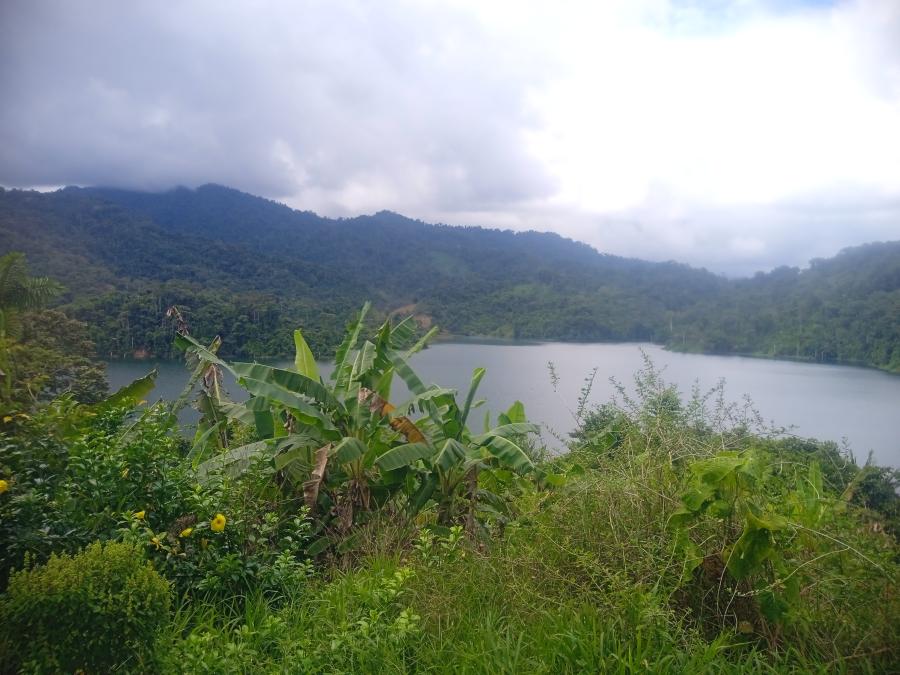
By Jonathan González Quiel
Before narrating the latest events on the anti-mining struggle, it is relevant to clarify that we are not a mining country, despite the fact that during the time of the colony and the Spanish subjugation, some gold mines were established with the same logic of extractivist dispossession of a foreign power.
In the middle of the 20th century, the United Nations Development Program (UNDP), together with the natural resources directorate of the Ministry of Commerce, explored the Panamanian geography to determine the type of minerals present and the location of the largest deposits of copper and other metals of high value for the global market (see map 1).
During the military period led by Omar Torrijos Herrera, an attempt was made to develop a state mine with the financial support of Javelin LTD of Canada, Texas Gulf Inc of the United States, and the British company Rio Tinto Zinc (RTZ). This mine was created in 1975 and became known as the Cerro Colorado Mining Development Corporation (Codemin).
Map 1. Exploration and exploitation applications between 1960 and 2019. Author CLUB QGIS PANAMA
In the 1990s, we had two important mining projects that obtained exploitation contracts. The first one, called Mina Santa Rosa, was presented in 1995 and was closed in 1999 due to an environmental disaster after the cyanide leaching tanks spilled, contaminating the main rivers in the interior of the country. The second project was Cobre Panamá, approved in 1997, for the extraction of copper and gold.
In 2011 the government of Ricardo Martinelli modified the mining code through Law 8 of 2011, and the people of the Ngäbe Bugle comarca took to the streets to fight against mining. In February 2012, the Ngäbe people rejected modifications to the mining code and there were demonstrations and confrontations for six days, in which Geronimo Rodriguez Tugri and Mauricio Mendez were killed. That same struggle disrupted food security, paralyzed the land logistics system and generated fuel shortages in several provinces in the west of the country.
The events of 2012 allowed the Ngabe people to negotiate Law 11 of 2012, which prohibits open-pit mining and hydroelectric projects within the Ngäbe Bugle comarca. The struggle of the Ngäbe Buglé people set an important precedent in the fight against extractivism and for the dignity of Indigenous Peoples in Panama.
Origins of the Cobre Panamá Project and Minera Panamá
The Cobre Panama project had been approved in 1997 by the Panamanian Legislative Assembly during the mandate of President Ernesto Perez Balladares, but in 2009 it entered into a lawsuit process before the Supreme Court of Justice (CSJ) due to unconstitutional defects. It was not until December 21, 2017, that the CSJ ruled and established that the contract of said mine is unconstitutional, leaving without effect what was signed in 1997.
For 20 years, the mine changed owners among Canadians, the most recent buyer being First Quantum Minerals, a company that manages the mine through a Panamanian subsidiary called Minera Panamá S.A. The mining company and its subsidiary bet on building despite the ruling and filed appeals for clarification and interpretation before the CSJ. This process lasted four years, enough time to start the extraction of copper, gold, and molybdenum.
The fight against mining has had several scenarios, but since 2021, environmental organizations have begun to press more strongly on the mining issue and become part of the Panama Vale Más Sin Minería Movement (PVMSM, Panama is worth more without mining). On June 24 of the same year, they presented a bill demanding a national mining moratorium. This request was signed by 57 social and environmental organizations in Panama.

Negotiation of a New Mining Contract
The current government of Laurentino Cortizo, which took office on July 1, 2019, decided to do the same as the previous government: not to abide by the ruling of unconstitutionality, which, in addition, was not published in the Official Gazette of Panama until December 22, 2021, four years after the ruling.
Since May 2021, the PVMSM movement added a cycle of street actions nationwide, which attracted countless sympathizers, especially young people, who would later become the main protagonists of the anti-mining struggle.
In July 2021, the government announced the beginning of a negotiation process with the mining company, where the State would be represented by members of the Ministry of Commerce and Industry, Ministry of Economy and Finance, Ministry of Environment, Ministry of Labor, and Ministry of Labor Development. Also participating were Dr. Adolfo Ahumada, Mr. Manuel Orestes Nieto, Dr. Daniel Esquivel, engineer Ana Méndez, Dr. Marcel Salamín, Dr. Nils Castro, and attorney Roberto Ábrego, who is currently president of the Trade and Economic Affairs Committee of the National Assembly. The objective of the negotiations was to achieve a new contract that would give legality to Minera Panamá, which had been operating illegally up to that date.
In January 2022, the Panamanian government announced an agreement obliging the mining company to guarantee a minimum annual royalty payment of US$375 million. The State described this agreement as historic and unprecedented, stating that it would help rescue the Social Security Fund and other government projects. The agreement reached remained under discussion during the year but was dissolved in December. For weeks, the government engaged in a media confrontation with the mine, setting up negotiations again on December 26, 2022.
On March 8, 2023, the National Government and Minera Panama announced a final contract agreement that basically repeated the same unconstitutional vices of the previous contract, adding a number of undue concessions, such as:
- The right to request the Civil Aeronautics Authority to issue temporary or permanent flight restrictions to third parties over the Concession Area up to 3,000 meters above sea level, for safety reasons.
- Broad powers to acquire, lease, or usufruct State or privately owned land without limit, inside or outside the concession.
- More than 4,000 additional hectares for the operation of the project, bringing the total area of use and easement to 17,780.38 hectares.
- Permission to double the concession term of the previous contract.
- The obligation to approve concessions for the exploration and later extraction of gold, silver, and molybdenum.
- Permission for the company to enter into a period of suspension of operations due to low copper prices in the international market, or unforeseeable cost increases that make the exploitation of the project economically unprofitable.
Mining concession map from the new First Quantum Mineral contract. Author Club QGIS PANAMA
On August 3, 2023, the Minister of Commerce and Industries presented the contract law before the assembly to assign the Commerce Commission and initiate the first phase of citizen consultation. This process ended on September 1, with approximately 230 people speaking against and in favor of the mine. At the request of the citizens, the members of the Commission traveled to the neighboring communities of the mining project: San Miguel de la Borda in the province of Colón, Coclesito in the province of Coclé and ended their tour on September 7 in Llano Grande, in La Pintada de Coclé.
The Commerce Commission also visited the mine on September 19, 2023, and returned on September 29 to the assembly, where 5 of 9 deputies voted against the contract law due to concerns about the company's ability to acquire, lease, or usufruct state or private land, inside or outside the concession area. The contract left the possibility of land expropriation in case of failure to reach an agreement with landowners. It could also serve as a frame of reference for future similar concessions with the other exploitation contracts that are in force.
Following this process, the National Assembly's Commerce Commission decided to request the executive body to withdraw the project and to make modifications to the concerns widely pointed out by the deputies who were against it and by the citizens who participated in the first stage.
On October 18, the executive body delivered the modifications to the draft contract law between the State and Minera Panamá, S.A. to the National Assembly, and these were approved in a record time of three days. On the night of October 20, the President sanctioned and published Contract Law 406 in Panama's Official Gazette.
Struggle in the Streets against the Mining Contract Law 406
Throughout the process, the Panama Vale Más Sin Minería Movement and the Alianza del Pueblo Unido, composed of workers, students, educators, professionals, Indigenous Peoples, and environmentalists, demonstrated against the bill and demanded its immediate repeal to put an end to the Donoso Copper mine.
With the signature of President Laurentino Cortizo, on Friday, October 20, the people took to the streets to demonstrate in all provinces of Panama. To the government's surprise, the young people organized themselves, and by October 23, there were more than 15,000 people. By the end of the week, the mobilization became a crowd of 100,000 people, a turnout that only compares to the mobilizations of the 1980s when they confronted the military regime of Antonio Noriega.
The enthusiasm of the protests spread throughout the main cities, but in the rural areas, there were street closures that paralyzed the land logistics of heavy cargo shipped to Central America and also the national logistics. Additionally, the supply of agricultural and livestock products from the interior to Panama City was cut off.
The government strongly repressed the protesters in Panama City and caused aggravated personal injuries, as in the case of Aubrey Baxter, a young environmentalist who lost his vision. Other protesters received gunshot wounds from National Police security personnel.

On October 30, in response to popular pressure, the government issued a statement to the nation proposing a mining moratorium law for contracts in process and new mining exploration applications. Additionally, it announced that it will hold a referendum on December 17 where the country will be asked if it agrees with contract Law 406.
On November 1, at the President's request, the National Assembly initiated an extraordinary session to legislate Law 407, to establish the mining moratorium at the national level and repeal Law 406. Meanwhile, the Supreme Court of Justice had admitted a total of 9 lawsuits of unconstitutionality against Law 406.
On November 2, nationwide protests continued. A European citizen killed Tomás Milton Cedeño García in Horconcitos, province of Chiriquí, while in Tierras Altas, Mayor Javier Pitti led a group of producers to attack Ngabes protesters who were closing the street in the township of Volcán. This attack was coordinated with the Crowd Control Units of the National Police; 12 protesters were injured, and 6 children presented respiratory problems due to tear gas. In other parts of Chiriqui province, confrontations occurred between farmers and protesters.
On November 3, President Laurentino Cortizo signed Law 407 for the mining moratorium, but this law excludes the article that repealed Law 406, because the opposition deputies considered that it was better to wait for a ruling of unconstitutionality from the Supreme Court of Justice that would provide more security against possible international arbitration.
From November 4 onwards, the government remained silent while the street closures continued at the national level, and the different articulations opposing mining were divided into two blocks. One block awaits the ruling of the Supreme Court of Justice, and the other demands the immediate repeal of Law 406.
On November 6, the newspaper La Estrella de Panamá launched an editorial full of hate and racism against the Ngabe Bugle people where they expressed the following:
"The Panamanian State has invested millions of dollars in the Ngabe Bugle comarca. It has subsidized its population for decades. What is the result? None. Instead of preserving the comarca, it is becoming more Latinized every day. Their discourse of preserving Mother Earth is not real. The rivers already show signs of contamination, the use of plastic replaced the native implements. Deforestation is increasing every day. Cults that sacrifice people are flourishing in the area and every now and then we receive news of child rapists. Should we really continue to invest the way we do in this region? The difference between the Ngâbes and the other comarcas is that it is these indigenous people with whom we have problems."
La Estrella newspaper's position on the attack on the protesters has been the same as that practiced by other media outlets, where they misinform and stigmatize the social movements and unions fighting against mining. They even label the protesters as terrorists, vandals and communists.
The politics of hate reached higher levels of tension, and during a street closure on November 7, in the district of Chame, an American citizen took his firearm and killed educators Iván Mendoza and Abdiel Díaz, who were protesting on the Panamerican Highway.
The Panamanian people remained in vigil in front of the Supreme Court of Justice while the great majority of street closures at the national level remained partially closed. The silence of the government began to generate tensions in some productive sectors that demanded the opening of the roads, generating confrontation between people against people.
On November 23, the Supreme Court of Justice closed the period of pleadings and declared itself in permanent session to begin the review of 126 pleadings received from the first two admitted lawsuits. While the people waited, they received two unpleasant pieces of news: a new decree for trawling had been signed, and the government had given economic aid to relatives of the politicians who govern us today. This generated even more rejection of the national government.
In the midst of so much confusion, on November 28, the day commemorating the 202nd anniversary of Panama's independence from Spain, the Supreme Court of Justice announced a new ruling declaring Law 406 unconstitutional and putting a definitive end to the First Quantum Minerals mine.
The struggle of the Panamanian people achieves a new popular victory against all odds, and renews the patriotic sentiment that had already led to the expulsion of the US colonial enclave in the last century.
In spite of the victory, it is still pending to be vigilant to the process of closing the mine and to stop the percussion that the government maintains against the indigenous people, union leaders, ecologists, and educators who today face judicial processes.
"Only the People Save the People."
--Jonathan González Quiel is an environmentalist and co-founder of QGIS PANAMA.


